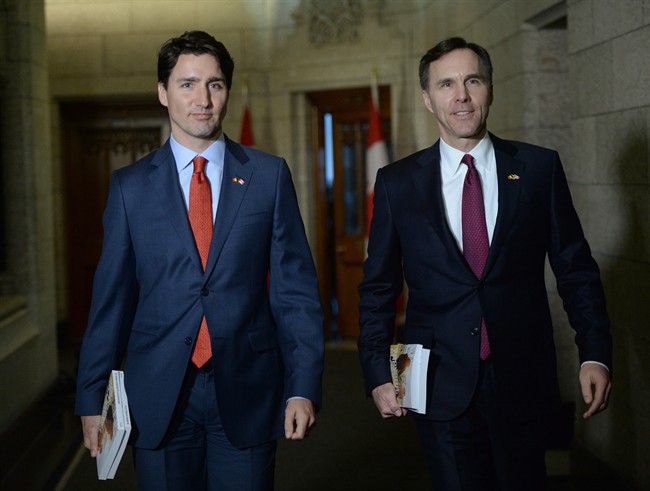The Parliamentary Budget Officer released its assessment of the recent federal budget Wednesday, and it’s not very flattering.

The PBO, which is responsible for providing non-partisan financial analysis for Parliament, says that among other things, the Liberal government is being overly pessimistic in its estimates for the growth of the Canadian economy over the next five years, and that the changes it made to the presentation of its first budget “have made it more difficult for parliamentarians to scrutinize public finances.”
“The Government did not provide detailed tables that identify the impact of changes to its adjustment to the private sector forecast and the effect of policy measures,” the PBO notes in a report released early Wednesday titled Budget 2016: Key Issues for Parliamentarians.
“Budget 2016 shortened the time horizon of cost estimates from five years to two years. Key fiscal information is being released outside of the budget and Fall Update, with no reconciliation between the main documents.”
READ MORE: Budget officer says Trudeau government’s deficit projections are way off
The PBO mentions that due to a lack of information in the budget, it was unable to provide complete planning tables for MPs to look over before the budget is voted on in the House of Commons.
Beyond the presentation issues, the document also notes the government is being way too pessimistic about overall economic growth. The finance department used private-sector economic forecasts to sketch out its budget, saying that would make the plan more “independent.”
But then it ignored those forecasts, lowering the private sector’s forecast of gross domestic product (not adjusted for inflation) by $40 billion per year between 2016 to 2020.
“Based on historical experience, PBO believes that the $40 billion per year forecast adjustment to the February 2016 private sector forecast of nominal GDP in 2016 and 2017 is excessive,” the report says.
That means that the government’s forecasted deficits, pegged at $29.4 billion and $29 billion for next two years alone, are likely to end up being smaller. Finance Minister Bill Morneau has acknowledged publicly that his government built in plenty of breathing room in the budget in case the economy gets worse. It now appears there is too much leeway.
READ MORE: The biggest losers of the 2016 federal budget were small businesses, wealthy Canadians
On the other end of the spectrum, the Liberal job-creation numbers, linked directly to a program of billions of dollars in new infrastructure spending, are seemingly too optimistic.
The government is projecting the creation of 43,000 new jobs over the next fiscal year, but the PBO says it will be closer to 26,000. The year after that, the Liberal estimate of 100,000 new jobs should be closer to 60,000, according to PBO.
Prime Minister Justin Trudeau addressed the negative report-card on Wednesday morning in Montreal, arguing that it’s better to be cautious than to end up in deeper financial trouble.
“For many, many years now, experts are often mistaken (in their projections) by about $40 billion,” he said. “We’ll make the adjustment right now, we’ll adjust the projections from private-sector economists right now.”
- Is home ownership only for the rich now? 80% say yes in new poll
- Canadian food banks are on the brink: ‘This is not a sustainable situation’
- Posters promoting ‘Steal From Loblaws Day’ are circulating. How did we get here?
- Investing tax refunds is low priority for Canadians amid high cost of living: poll







Comments